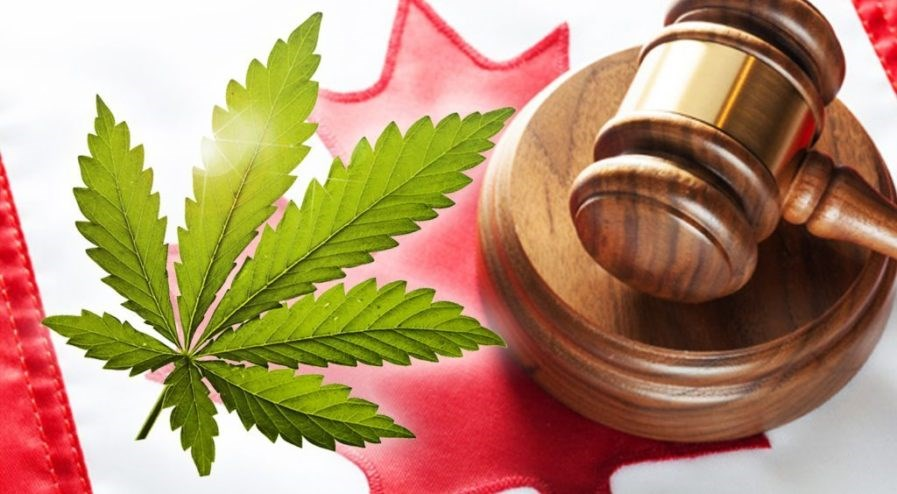On March 12, Health Canada announced periodic updates to the 《Cannabis Regulations》, 《Industrial Hemp Regulations》, and the 《Cannabis Act》, simplifying certain regulations to facilitate the development of the legal cannabis market. The regulatory reforms primarily focus on five key areas: licensing, production, packaging and labeling, security, and record-keeping. The government aims to address some of the challenges currently facing the industry while maintaining key public health and safety considerations under the federal 《Cannabis Act》. Although the regulations have undergone other changes since the legalization of cannabis in October 2018, this is the most comprehensive package of regulatory changes to date. While the regulatory reforms are expected to increase Health Canada’s oversight costs, the agency stated that the regulatory burden and costs for small businesses will be reduced. The administrative burden for cannabis businesses is projected to decrease by $7.8 million annually.
Key Changes to Cannabis Regulations
Research
Organizations and individual researchers no longer need to apply for a research license when conducting non-human or non-animal studies, as long as they possess no more than 30 grams of dried cannabis or its equivalent for research purposes at any time. Individuals or organizations may produce cannabis for research purposes but are prohibited from cultivating, propagating, or harvesting cannabis.
Micro-Cultivation and Nurseries
The permitted scale for micro-cultivation and micro-processing facilities has quadrupled. Previously, micro-cultivation facilities were limited to growing cannabis within a 200-square-meter area. This limit has now been expanded to 800 square meters, with no restrictions on the amount of cannabis that can be grown within this space. Previously, micro-processing facilities could only process up to 600 kilograms of dried cannabis or its equivalent. This limit has now been increased to 2,400 kilograms. Cannabis nurseries, which were previously restricted to a 50-square-meter space and could harvest up to 5 kilograms of cannabis flowers for seed production, can now operate within a 200-square-meter area. However, nurseries must still destroy the cannabis flowers after seed harvest.
Quality Assurance Persons (QAP)
The amendments to the 《Cannabis Regulations》 have increased the number of alternate quality assurance personnel allowed within a company. Previously, the number of alternate QAPs was limited to two; this restriction has now been lifted.
Cannabis Pollen
Cannabis pollen, which was previously unmentioned in the 《Cannabis Regulations》, is now permitted to be sold between license holders.
Consumer Information
Licensed processors are no longer required to include a printed copy of consumer information documents in each package of cannabis products sent out.
COVID-19 Policy Extensions
Several temporary changes made by Health Canada during the COVID-19 pandemic and subsequent shutdowns have now been made permanent. These include the removal of requirements for cannabis and industrial hemp importers and exporters to specify ports of entry and exit on their import/export permits.
License Suspension
Under the new policy, Health Canada may suspend the licenses of any license holders who fail to pay fees or submit cannabis revenue declarations as required by the 《Cannabis Fees Order》.
Cannabis Derivatives
Derivatives made from non-psychoactive cannabis seeds, mature stems, and roots can now be imported, exported, sold, and processed without a license, subject to certain restrictions based on potential cannabis content.
Industrial Hemp
Amendments to Canada’s 《Industrial Hemp Regulations (IHR)》 have removed the previous maximum THC concentration of 10 ppm for industrial hemp seed derivatives. Additionally, testing requirements, wholesale sales labeling, and import/export requirements have been eliminated. These changes allow non-psychoactive industrial hemp seed derivatives to be imported, exported, sold, and processed without a license or permit.
Cannabis Exemptions (Food and Drugs Act)
Under the 《IHR》, foods or cosmetics containing cannabis made solely from industrial hemp seed derivatives are now exempt.
Personnel and Site Security
Revisions to the 《Cannabis Regulations》have eliminated the requirement for personnel with security clearance to be present on-site. Cannabis cultivators and processors can now send cannabis for remediation (e.g., irradiation) without requiring security-cleared personnel to accompany the process. This also applies to research license or cannabis drug license holders. Additionally, the requirement for intrusion detection systems around the perimeter of sites has been removed. Any licensed operational areas without cannabis or cannabis-related activities no longer require video recording equipment or intrusion detection systems to operate continuously. Previous requirements for storage areas to have a “room within a room” and for records of personnel entering and exiting storage areas have also been eliminated. Federal license holders are now required to retain visual records showing movements around the site perimeter, operational areas (indoors and outdoors), and storage areas for at least one year from the date of recording.
Pre-Rolls and Ethanol
The previous restriction limiting the weight of individual units of dried cannabis for inhalation (e.g., pre-rolled cannabis) to 1 gram has been removed. In addition to previously permitted cannabis extract products and edible cannabis products, ethanol is now allowed as an ingredient in certain cannabis products, including inhalable cannabis extracts, with a maximum net weight of 7.5 grams.
Cannabis Packaging
Health Canada has made several changes to cannabis packaging requirements, including allowing windows on dried cannabis packaging and permitting the use of different colors on cannabis containers. Multiple edible cannabis product containers can now be co-packaged into the outermost container used for dried or fresh cannabis, cannabis topical products, and cannabis extract products. The 30-gram (or equivalent) limit still applies to the outermost container. The previous 10-milligram THC limit for edible cannabis products in the outermost container has been removed, allowing multiple individual THC-containing edible products to be packaged together.
Cannabis Product Labeling
QR codes are now permitted on cannabis packaging containers, and the use of fold-out or peel-back labels has been expanded to all packaging sizes. Previously, only small cannabis containers were allowed to use such labels. Cannabis license holders can now also use inserts and leaflets. The font size for cannabinoid and potency information can now be as large as the required health warning messages. Cannabis products now only need to display total THC and total CBD content on labels, rather than both “total” and “actual” THC and CBD content. A 12-month transition period has been granted, allowing producers to use existing label inventory. Requirements for dried cannabis equivalency statements on labels and the inclusion of “expiry date not determined” statements without stability studies have been removed. Outermost packaging containing multiple direct containers no longer needs to display packaging date information, though direct containers must still include this information. Shipments are now allowed within seven days before or after the printed packaging date (a COVID-era provision), and symbols such as recycling logos are permitted on packaging, with some restrictions.
Record-Keeping and Reporting
Cannabis license holders are no longer required to record the quantity, method of use, or rationale for using any substances in cannabis products. License holders are also no longer required to submit a New Cannabis Product Notification (NNCP) before dried or fresh cannabis products are made available for retail sale. Additionally, the requirement for license holders to retain a document listing cannabis extracts, cannabis topical products, or edible cannabis products when selling, distributing, or exporting cannabis products has been removed. The new regulations eliminate all record-keeping requirements for cannabis cultivation waste (leaves, shoots, and branches collected during propagation, cultivation, or harvesting) and the need for qualified personnel to witness and certify the destruction of such materials on-site or off-site. Descriptions of the location and method of destruction for cannabis waste are no longer required. Annual reports to the regulator, which primarily outlined promotional plans and expenditures, have been eliminated, though license holders must still retain information on promotional expenses and descriptions of the types of promotions associated with these expenditures. Cannabis license holders no longer need to submit information to Health Canada indicating whether ownership or rights held by primary investors have been transferred or otherwise provided to others, along with other related details. License holders wholly owned by publicly traded companies no longer need to report to key investors, as other aspects of financial reporting still cover this. License holders must now measure and record the number of cannabis seeds planted, rather than their net weight.
Cannabis Tracking System Order
The unit of measurement for monthly reporting of unpackaged cannabis plant seeds has been changed from kilograms to the number of seeds, aligning with information reported to the Canada Revenue Agency. Monthly reports on the weight of cannabis cultivation waste are no longer required if the waste was no longer in inventory or was not added to inventory in the previous month. The Cannabis Tracking System Order (Cultivation Waste) will take effect on the first day of the month following the implementation of the Regulations Amending Certain Cannabis Regulations (Streamlining Requirements). The delayed effective date of this order eliminates the possibility of reporting both the weight and number of unpackaged seeds in a single reporting period, as well as the inclusion and exclusion of cultivation waste within the same reporting period. These policy adjustments and changes took effect on March 12, 2025. In the long term, these changes are expected to save license holders a total of nearly $18 million in compliance costs, with total administrative cost savings projected to exceed $24 million.
Post time: Mar-17-2025





